成长记
Llamadrama
2017年11月16日
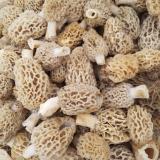
Lost some leaves but hoping they'll grow back in. There are some babies growing under the leaves.
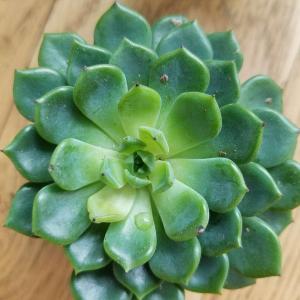

0
0
文章
Miss Chen
2017年11月15日

Native to Florida and the southern portion of the U.S., muscadine grapes grow in small clusters. Most grape farmers use muscadine grapes in wines, jams, jellies and juices, but the fruit also offers a pleasing taste when eaten directly from the vine. Muscadine grapes prefer to grow in sunny, well-drained soils of USDA hardiness zones 6 through 9. Within one of these hardiness zones you can plant muscadine grapes successfully in your background landscape.

Seed Germination
Step 1
Remove muscadine grape seeds from the ripe fruit. Remove any attached pulp. Rinse with lukewarm water. Lay the seeds on a paper plate to dry, undisturbed for 24 hours.
Step 2
Place damp peat moss into a plastic sandwich until it is half full. Drop the muscadine grape seeds into the baggie and seal it. Place the baggie in the refrigerator for three months.
Step 3
Pour sterile potting soil into 4-inch pots until they are three-fourths full. Remove the muscadine grape seeds from the refrigerator after the three-month stratification period. Push two to three seeds ¼ of an inch into the soil of each pot.

Step 4
Mist the soil with lukewarm water. Set the pots on a tray. Place the tray in an area that receives bright, indirect light. Maintain a temperature of approximately 75 degrees F during the germination process, which usually begins within two to three weeks.
Step 5
Maintain bright light and moist soil conditions as the muscadine grape seedlings continue to grow. Transplant the seedlings into 6-inch pots when they outgrow the 4-inch pots. Transplant the seedlings outdoors after a full year of growth.
Transplanting Outdoors
Step 1
Dig holes large enough to accommodate the root balls of the muscadine grape seedlings. The leaves of the plants should remain above the soil line when positioned in the holes. Space the holes 20 feet apart.
Step 2
Keep the soil moist at a 1-inch depth throughout the growing season. After the first year of growth, muscadine grapes will only require supplemental watering during drought.
Step 3
Secure each of the muscadine grape plants with flexible cording attached to a stake. Set up a trellis behind each of the stakes to guide the muscadine grape plants upward as they grow.

Seed Germination
Step 1
Remove muscadine grape seeds from the ripe fruit. Remove any attached pulp. Rinse with lukewarm water. Lay the seeds on a paper plate to dry, undisturbed for 24 hours.
Step 2
Place damp peat moss into a plastic sandwich until it is half full. Drop the muscadine grape seeds into the baggie and seal it. Place the baggie in the refrigerator for three months.
Step 3
Pour sterile potting soil into 4-inch pots until they are three-fourths full. Remove the muscadine grape seeds from the refrigerator after the three-month stratification period. Push two to three seeds ¼ of an inch into the soil of each pot.

Step 4
Mist the soil with lukewarm water. Set the pots on a tray. Place the tray in an area that receives bright, indirect light. Maintain a temperature of approximately 75 degrees F during the germination process, which usually begins within two to three weeks.
Step 5
Maintain bright light and moist soil conditions as the muscadine grape seedlings continue to grow. Transplant the seedlings into 6-inch pots when they outgrow the 4-inch pots. Transplant the seedlings outdoors after a full year of growth.
Transplanting Outdoors
Step 1
Dig holes large enough to accommodate the root balls of the muscadine grape seedlings. The leaves of the plants should remain above the soil line when positioned in the holes. Space the holes 20 feet apart.
Step 2
Keep the soil moist at a 1-inch depth throughout the growing season. After the first year of growth, muscadine grapes will only require supplemental watering during drought.
Step 3
Secure each of the muscadine grape plants with flexible cording attached to a stake. Set up a trellis behind each of the stakes to guide the muscadine grape plants upward as they grow.
0
0
成长记
astronbot
2017年11月14日

wanted to take a pic to track his growth. he should be much happier now under the grow light.
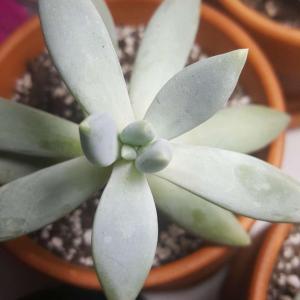
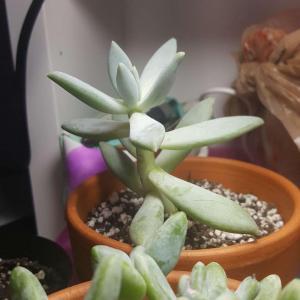


0
0
成长记
astronbot
2017年11月14日

I decided to put all my unknown props into one plant category. Here's what this lil guy has been up to.. it looks pretty elongated :( hopefully it'll grow normally under my new grow light
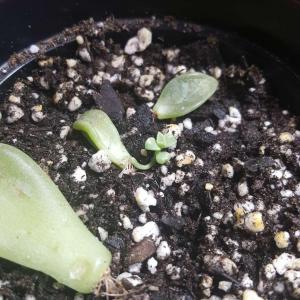

0
0
成长记
Brittany Paterson NJ
2017年11月13日

Shes really starting to show her color! Im thankful for my T5 grow lights.
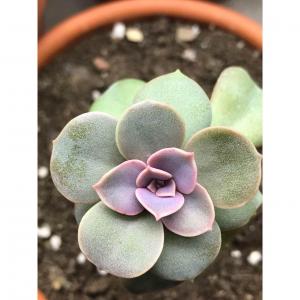

3
0
文章
Miss Chen
2017年11月13日

Tomatoes are among the most popular vegetables to grow in the home garden. The two most common reasons for tomato failure in Kansas are planting them too early before temperatures are sufficiently warm, and not providing adequate moisture, especially during hot, windy weather. Kansas gardeners with sandy soils should monitor soil moisture frequently, since these soils tend to dry out quickly.

Step 1
Buy dark green, compact plants, selecting disease-resistant varieties if possible. Fusarium wilt is the most common tomato plant disease in Kansas, according to Kansas State University, while nematodes affect tomatoes in areas south of Interstate 70.
Step 2
Hand-broadcast a complete garden fertilizer on the soil at a rate of 1 to 2 lbs. per 100 square feet of soil. Dig the soil with a shovel to a depth of 8 inches or use a rototiller. Avoid fertilizers high in nitrogen, which encourage lush vegetative growth with few fruits. The first number on the fertilizer box indicates the nitrogen level. It should be half the level of the other nutrients, i.e. 5-10-10.
Step 3
Plant tomatoes when the daytime temperatures are above 70 degrees F and all chance of frost is passed. According to Kansas State University, in southeastern Kansas, plant tomatoes early-to-mid April; in eastern and central Kansas, plant tomatoes from late April to early May. In northwest Kansas, plant tomatoes after May 15. Cover the tomatoes with a row cover or cloche if cold weather threatens.
Step 4
Water tomato plants at least weekly, as needed to keep the soil evenly moist. Don't allow the soil to dry out between watering and avoid watering it until it is soggy, which contributes to blossom-end rot. Apply a 2- to 3-inch layer of compost, grass clippings or straw around the base of the plants to minimize weed growth and conserve moisture.

Step 5
Monitor tomato plants for disease and pest problems. Consult a local county extension office for help in identifying and treating specific problems. Good cultural practices, such as selecting disease-resistant plants and watering tomatoes evenly and consistently prevent many problems. Remove any dead or diseased plant material, hand-pick and destroy tomato hornworms and avoid the use of pesticides that kill ladybugs and lacewings, since these predatory insects help eliminate pests.
Step 6
Twist the tomatoes gently to remove them from the plants when they are ripe, or almost ripe (pink to bright red, depending on the variety). If a frost threatens, pick the green tomatoes and lay them in a single layer in a box. Place them in a cool, dark place, such as a basement, to ripen.

Step 1
Buy dark green, compact plants, selecting disease-resistant varieties if possible. Fusarium wilt is the most common tomato plant disease in Kansas, according to Kansas State University, while nematodes affect tomatoes in areas south of Interstate 70.
Step 2
Hand-broadcast a complete garden fertilizer on the soil at a rate of 1 to 2 lbs. per 100 square feet of soil. Dig the soil with a shovel to a depth of 8 inches or use a rototiller. Avoid fertilizers high in nitrogen, which encourage lush vegetative growth with few fruits. The first number on the fertilizer box indicates the nitrogen level. It should be half the level of the other nutrients, i.e. 5-10-10.
Step 3
Plant tomatoes when the daytime temperatures are above 70 degrees F and all chance of frost is passed. According to Kansas State University, in southeastern Kansas, plant tomatoes early-to-mid April; in eastern and central Kansas, plant tomatoes from late April to early May. In northwest Kansas, plant tomatoes after May 15. Cover the tomatoes with a row cover or cloche if cold weather threatens.
Step 4
Water tomato plants at least weekly, as needed to keep the soil evenly moist. Don't allow the soil to dry out between watering and avoid watering it until it is soggy, which contributes to blossom-end rot. Apply a 2- to 3-inch layer of compost, grass clippings or straw around the base of the plants to minimize weed growth and conserve moisture.

Step 5
Monitor tomato plants for disease and pest problems. Consult a local county extension office for help in identifying and treating specific problems. Good cultural practices, such as selecting disease-resistant plants and watering tomatoes evenly and consistently prevent many problems. Remove any dead or diseased plant material, hand-pick and destroy tomato hornworms and avoid the use of pesticides that kill ladybugs and lacewings, since these predatory insects help eliminate pests.
Step 6
Twist the tomatoes gently to remove them from the plants when they are ripe, or almost ripe (pink to bright red, depending on the variety). If a frost threatens, pick the green tomatoes and lay them in a single layer in a box. Place them in a cool, dark place, such as a basement, to ripen.
0
0
文章
Miss Chen
2017年11月12日

Excessive amounts of blueberries (Vaccinium spp.) on a bush, called over-cropping, are typically smaller berries of poorer quality. To prevent this, prune canes to reduce the number of berry-producing buds. Fruit buds grow on new shoots one year before berries appear. Annual, moderate pruning of blueberry bushes will result in fewer canes but larger berries and greater, more consistent yields.

Species to Prune
Blueberries like well-drained, acidic soil with a pH between 4.5 to 5.5. The most widely grown species, highbush blueberries (Vaccinium corymbosum), grow from 6 to 12 feet tall in U.S. Department of Agriculture plant hardiness zones 3a through 8b. Rabbiteye blueberries (Vaccinium ashei) grow 6 to 8 feet tall in USDA zones 7a through 9B. Lowbush blueberries (Vaccinium augustifoliam) grow from 6 inches to 2 feet tall in USDA zones 2a to 6b.
When to Prune
Prune blueberries in late winter to early spring after the chance of freezing weather has passed. If you delay pruning a bush for a year or more then prune it heavily, canes maturing simultaneously will yield fewer berries. Pruning after harvesting berries will decrease long-term yield and make a bush susceptible to winter injury.
Tools to Use
Use hand-pruning shears to remove 1-year-old wood and a pruning lopper or hand saw to remove 2- to 3-year-old wood. Disinfect pruning tools before use by soaking them for five minutes in 1 part household bleach to 3 parts water and let air dry.

Pruning Young Bushes
Allowing young bushes to produce berries can stunt their growth, leading to several years of substantially lower harvests. To prevent this, prune the round, plump fruit buds 2 to 3 inches from the tips of the shoots. Prune to shape an upright plant that lets sunlight into the interior.
Remove twisted and low-growing canes at the start of the third year. Prune low-growing weak shoots from the bottom of young bushes. Since they'll be shaded by vigorous shoots above them, they won't be productive. Thicker, higher shoots will bloom later and bear larger berries. Pruning young, vigorous shoots to 4 to 6 inches below the top of the bush will stimulate side branches, increasing berry yields.
If a bush grew more than two new canes the previous year, prune all but the two most vigorous new canes at the level of the crown. Continue this light pruning until the bush reaches full maturity at about six years.
Pruning Mature Bushes
Blueberry canes give smaller yields and poorer quality berries after they're fully mature. Eight-year-old canes need more leaves to support their berries. Since they have usually grown numerous branches, their new shoots on which berries grow are typically weak and thin.
Prune one or two of the largest canes, including unproductive canes larger than 1 inch thick. Allow the same number of new canes to grow as replacements. If a bush contains a mix of different-aged canes, then you'll lose a minimal amount of berries by removing 8-year-old canes each year. Seven-year-old canes will replace pruned 8-year-old canes. You can prune up to 20 percent of a bush without affecting its yield. There will be fewer, larger berries, but eventually the entire crown will be renewed.
Since root suckers bear more berries than stump suckers on highbush cultivars, prune their old canes to the ground. Prune old canes of rabbiteye cultivars to 6 to 12 inches from the ground, forcing new, berry-producing canes to grow from their stumps.
To rejuvenate a declining bush, prune diseased, insect-infested and dead canes, then weak canes shaded by large canes. Prune older canes throughout the canopy to let in more light and encourage new canes to grow. If the bush no longer produces berries, prune all canes to renew growth.

Species to Prune
Blueberries like well-drained, acidic soil with a pH between 4.5 to 5.5. The most widely grown species, highbush blueberries (Vaccinium corymbosum), grow from 6 to 12 feet tall in U.S. Department of Agriculture plant hardiness zones 3a through 8b. Rabbiteye blueberries (Vaccinium ashei) grow 6 to 8 feet tall in USDA zones 7a through 9B. Lowbush blueberries (Vaccinium augustifoliam) grow from 6 inches to 2 feet tall in USDA zones 2a to 6b.
When to Prune
Prune blueberries in late winter to early spring after the chance of freezing weather has passed. If you delay pruning a bush for a year or more then prune it heavily, canes maturing simultaneously will yield fewer berries. Pruning after harvesting berries will decrease long-term yield and make a bush susceptible to winter injury.
Tools to Use
Use hand-pruning shears to remove 1-year-old wood and a pruning lopper or hand saw to remove 2- to 3-year-old wood. Disinfect pruning tools before use by soaking them for five minutes in 1 part household bleach to 3 parts water and let air dry.

Pruning Young Bushes
Allowing young bushes to produce berries can stunt their growth, leading to several years of substantially lower harvests. To prevent this, prune the round, plump fruit buds 2 to 3 inches from the tips of the shoots. Prune to shape an upright plant that lets sunlight into the interior.
Remove twisted and low-growing canes at the start of the third year. Prune low-growing weak shoots from the bottom of young bushes. Since they'll be shaded by vigorous shoots above them, they won't be productive. Thicker, higher shoots will bloom later and bear larger berries. Pruning young, vigorous shoots to 4 to 6 inches below the top of the bush will stimulate side branches, increasing berry yields.
If a bush grew more than two new canes the previous year, prune all but the two most vigorous new canes at the level of the crown. Continue this light pruning until the bush reaches full maturity at about six years.
Pruning Mature Bushes
Blueberry canes give smaller yields and poorer quality berries after they're fully mature. Eight-year-old canes need more leaves to support their berries. Since they have usually grown numerous branches, their new shoots on which berries grow are typically weak and thin.
Prune one or two of the largest canes, including unproductive canes larger than 1 inch thick. Allow the same number of new canes to grow as replacements. If a bush contains a mix of different-aged canes, then you'll lose a minimal amount of berries by removing 8-year-old canes each year. Seven-year-old canes will replace pruned 8-year-old canes. You can prune up to 20 percent of a bush without affecting its yield. There will be fewer, larger berries, but eventually the entire crown will be renewed.
Since root suckers bear more berries than stump suckers on highbush cultivars, prune their old canes to the ground. Prune old canes of rabbiteye cultivars to 6 to 12 inches from the ground, forcing new, berry-producing canes to grow from their stumps.
To rejuvenate a declining bush, prune diseased, insect-infested and dead canes, then weak canes shaded by large canes. Prune older canes throughout the canopy to let in more light and encourage new canes to grow. If the bush no longer produces berries, prune all canes to renew growth.
0
0
文章
Miss Chen
2017年11月12日

When deciding a new plant to grow in Georgia, a blueberry bush is a GREAT choice. The are easy to maintain, don't have thorns and won't spread like crazy growing all over the place.

Recently, doctors have started saying that blueberries are among the top most beneficial fruits to feed your body. It's no wonder, considering they yield the highest antioxidant capacity of all fresh fruit, neutralize free radicals and aid in reducing belly fat. Not to mention they help promote urinary tract health, brain health, help to fight heart disease and help relieve constipation and digestion. Some doctors even suspect they are linked with reversing cancer!
If you live in Georgia, you are exceptionally lucky as you live in the perfect climate for growing blueberries. It's in the south so it makes growing them much easier as the summers are long and hot and there is usually very little cold. It's the perfect climate to grow blue berries, in Georgia!
So how do you do it? The following three simple steps will show you.
Step 1
Choose the right variety of blueberry bush! Get the rabbiteye blueberry bushes as they are best for the climate in the south. If you want to grow blueberries in Georgia, it is critical you choose the rabbiteye variety for the most success. There are three different varieties of blueberries, such as highbush, lowbush and rabbiteye. The highbush and lowbush are more geared toward climates other than the kind in Georgia, so you will want to steer away from them.
Rabbiteye blue berries require more heat which makes them perfect for growing in Georgia. Another reason you will want to plant rabbiteye blueberry bushes is because they tend to grow the biggest at a whopping 10 feet high! That means more blueberries for your money and more bang for your buck.
Where do you get rabbiteye blueberry bushes? Most local nurseries in Georgia carry them, but if you have any trouble finding them you can always order them online for fairly cheap.
When you buy them, try to get plants that 2 years old as it will drastically speed up the production of blueberries.

Step 2
Plant them correctly. They are self fertile, but for the best results plant them near two other varieties to create cross pollination.
For the best development possible of rabbiteye blueberries bushes, plant them in the absolute sunniest place possible and in a region where they won't be crippled by late spring frosts.
Make sure you plant them in an acidic soil of anywhere between 4.5 pH and 4.8 pH, as this is what they will need to grow and meet their full potential. Most soils aren't this acidic, naturally, so be sure to do a bit of soil testing to make sure you select the most acidic and fertile spot.
You can buy home soil test kits either at the nursery where you buy the plant. If you can't find them in your local nursery, feel free to order your soil test kit online as well. If the soil in the area has too high of a pH balance, be sure to acidify it with Mir-Acid. You can buy Mir-Acid at just about any nursery nationwide.
To make the soil more fertile for the growth of your blueberries, be sure to add compost to the soil.
Once you make sure the soil is both fertile and of the right acidity, begin to plant your blueberry bushes by spacing them approximately four feet away from each other.
Be sure to plant the blueberry bushes so that their bloom periods overlap. For example, you want to have one mid season and one getting ready to start it's bloom period. This will ensure you will have blue berries year round.
I recommended applying a wood chip mulch around your blueberry plant to discourage the growth of weeds.
Step 3
Maintain them correctly. There are quite a few important things you need to do to make sure that your blueberries production is maintained. One of these things is to test the pH balance of the soil annually to make sure that it hasn't changed. After your blueberry bushes have been in production for a few years, you will want to prune them to open the way for new growth.
You'll need a good strategy to keep the birds away, unless you don't mind having the birds raid your plants. If you don't want to share the blueberries with the birds, then you're going to want to cover the bushes with a net.
To determine when the berries are ripe and ready for eating, hold your hand beneath each clump and gently brush them with your fingers. Any berries that are ready to be eaten will easily fall into your hand. Enjoy!

Recently, doctors have started saying that blueberries are among the top most beneficial fruits to feed your body. It's no wonder, considering they yield the highest antioxidant capacity of all fresh fruit, neutralize free radicals and aid in reducing belly fat. Not to mention they help promote urinary tract health, brain health, help to fight heart disease and help relieve constipation and digestion. Some doctors even suspect they are linked with reversing cancer!
If you live in Georgia, you are exceptionally lucky as you live in the perfect climate for growing blueberries. It's in the south so it makes growing them much easier as the summers are long and hot and there is usually very little cold. It's the perfect climate to grow blue berries, in Georgia!
So how do you do it? The following three simple steps will show you.
Step 1
Choose the right variety of blueberry bush! Get the rabbiteye blueberry bushes as they are best for the climate in the south. If you want to grow blueberries in Georgia, it is critical you choose the rabbiteye variety for the most success. There are three different varieties of blueberries, such as highbush, lowbush and rabbiteye. The highbush and lowbush are more geared toward climates other than the kind in Georgia, so you will want to steer away from them.
Rabbiteye blue berries require more heat which makes them perfect for growing in Georgia. Another reason you will want to plant rabbiteye blueberry bushes is because they tend to grow the biggest at a whopping 10 feet high! That means more blueberries for your money and more bang for your buck.
Where do you get rabbiteye blueberry bushes? Most local nurseries in Georgia carry them, but if you have any trouble finding them you can always order them online for fairly cheap.
When you buy them, try to get plants that 2 years old as it will drastically speed up the production of blueberries.

Step 2
Plant them correctly. They are self fertile, but for the best results plant them near two other varieties to create cross pollination.
For the best development possible of rabbiteye blueberries bushes, plant them in the absolute sunniest place possible and in a region where they won't be crippled by late spring frosts.
Make sure you plant them in an acidic soil of anywhere between 4.5 pH and 4.8 pH, as this is what they will need to grow and meet their full potential. Most soils aren't this acidic, naturally, so be sure to do a bit of soil testing to make sure you select the most acidic and fertile spot.
You can buy home soil test kits either at the nursery where you buy the plant. If you can't find them in your local nursery, feel free to order your soil test kit online as well. If the soil in the area has too high of a pH balance, be sure to acidify it with Mir-Acid. You can buy Mir-Acid at just about any nursery nationwide.
To make the soil more fertile for the growth of your blueberries, be sure to add compost to the soil.
Once you make sure the soil is both fertile and of the right acidity, begin to plant your blueberry bushes by spacing them approximately four feet away from each other.
Be sure to plant the blueberry bushes so that their bloom periods overlap. For example, you want to have one mid season and one getting ready to start it's bloom period. This will ensure you will have blue berries year round.
I recommended applying a wood chip mulch around your blueberry plant to discourage the growth of weeds.
Step 3
Maintain them correctly. There are quite a few important things you need to do to make sure that your blueberries production is maintained. One of these things is to test the pH balance of the soil annually to make sure that it hasn't changed. After your blueberry bushes have been in production for a few years, you will want to prune them to open the way for new growth.
You'll need a good strategy to keep the birds away, unless you don't mind having the birds raid your plants. If you don't want to share the blueberries with the birds, then you're going to want to cover the bushes with a net.
To determine when the berries are ripe and ready for eating, hold your hand beneath each clump and gently brush them with your fingers. Any berries that are ready to be eaten will easily fall into your hand. Enjoy!
0
0
文章
Miss Chen
2017年11月12日

Blueberry plants are simple fruits to for almost anyone to grow. They grow in a variety of regions and will regrow year after year. A single blueberry plant can produce up to eight bushels of blueberries in a single growing season. Blueberries grow best in areas with acidic soil, so if your region has an abundance of acidity, you are in an even more ideal position to grow blueberries at home.

Step 1
Wait until the threat of frost subsides in the early spring to plant blueberry bushes.
Step 2
Plan blueberry bush plantings in a location that receives at least four to five hours of sunlight per day.
Step 3
Dig a space measuring 4 feet wide by 2 feet deep in which to grow each blueberry plant. Space the blueberry plants 6 feet apart since full grown plants will bush out quite a bit.
Step 4
Pour a thick layer of peat moss into the bottom of the hole and then insert the blueberry bush on top of it. Use your hands to pack the soil around the base of the blueberry plant to completely cover the roots.

Step 5
Trim away the lower branches of the blueberry plant to prevent them touching the ground.
Step 6
Apply fertilizer to the blueberry plant after it has been planted for several months. Use a 10-10-10 fertilizer and spread it in a 12-inch diameter around the base of the blueberry plant.
Step 7
Water the blueberry plants at least twice per week and more during periods of drought.

Step 1
Wait until the threat of frost subsides in the early spring to plant blueberry bushes.
Step 2
Plan blueberry bush plantings in a location that receives at least four to five hours of sunlight per day.
Step 3
Dig a space measuring 4 feet wide by 2 feet deep in which to grow each blueberry plant. Space the blueberry plants 6 feet apart since full grown plants will bush out quite a bit.
Step 4
Pour a thick layer of peat moss into the bottom of the hole and then insert the blueberry bush on top of it. Use your hands to pack the soil around the base of the blueberry plant to completely cover the roots.

Step 5
Trim away the lower branches of the blueberry plant to prevent them touching the ground.
Step 6
Apply fertilizer to the blueberry plant after it has been planted for several months. Use a 10-10-10 fertilizer and spread it in a 12-inch diameter around the base of the blueberry plant.
Step 7
Water the blueberry plants at least twice per week and more during periods of drought.
0
0
文章
Miss Chen
2017年11月12日

There are good reasons gardeners typically choose to grow blueberries from cuttings or nursery shrubs -- they take less time to produce blueberries and reproduce their parents' traits accurately. For the patient gardener, though, growing blueberry shrubs from seed can be an adventure with surprising results. Choose the right type of blueberry and give it enough sun and acidic soil and you might find your name on a new variety.

Blueberry Basics
Match the type of blueberry you plant to the conditions in your garden. Wild lowbush blueberries (Vaccinium angustifolium) are hardy from U.S. Department of Agriculture plant hardiness zones 3 through 7 and plants demand between 1,000 and 1,200 chilling hours -- time below 45 degrees Fahrenheit -- for annual bloom and berry production. Lowbush blueberries bloom in May and June on 2-foot tall shrubs that form colonies. Highbush blueberry (Vaccinium corymbosum) bushes grow as tall as 15 feet. Northern highbush plants typically grow from USDA zones 3 through 7 and need 800 to 1,000 chilling hours annually. Southern highbush (Vaccinium corymbosum hybrid) plants are typically hardy in USDA zones 5 through 10, and require only 150 to 800 chilling hours a year. All blueberries thrive in full sun in a moist, but well-drained, sandy loam with an acidic pH of 5.5.
Romancing the Seed
Most blueberries do not self-pollinate -- they need a nearby mate with similar genetic qualities to fertilize their flowers. This means blueberries are an unpredictable lot whose offspring seldom duplicate either parent. For this reason, it's usually better to purchase seeds collected by plant societies that contain known cultivars, but some prefer to harvest their own hybrids in the fall. Hold fruit in the refrigerator for several days before maceration and repeated rinsing with water. Remove floating pulp and sterile seeds with a paper towel -- viable seeds sink to the bottom. Scarify seeds by placing them in damp sphagnum moss and filing them in the freezer or fridge for 90 days – that's over 2,000 chilling hours. Keep seeds refrigerated until planting time.

Making a Home
After scarifying seeds in the fridge, plant blueberry seeds outdoors in the fall in warm climates and in spring in the North. For better cultural control, plant them in dampened Sphagnum peat moss in trays. Wherever you plant the seeds, cover then with only 1/4 inch of soil and keep the area continually moist. Blueberries can take six to eight weeks to germinate. Hybrid highbush seeds germinate more unreliably and might take longer than their wild lowbush cousins -- so don't give up until 12 weeks have passed. Sprouting plants need sunny, warm conditions.
Moving Day
Plants will only grow 5 to 6 inches in their first year, so Northern gardeners might want to keep their plants in a sunny window during their first winter. Keep indoor trays on sunny windowsills with a florescent light mounted 14 inches above each tray to provide supplemental light. You won't know what combination of traits your plant has until it begins blooming and bearing after two or more years of growth.

Blueberry Basics
Match the type of blueberry you plant to the conditions in your garden. Wild lowbush blueberries (Vaccinium angustifolium) are hardy from U.S. Department of Agriculture plant hardiness zones 3 through 7 and plants demand between 1,000 and 1,200 chilling hours -- time below 45 degrees Fahrenheit -- for annual bloom and berry production. Lowbush blueberries bloom in May and June on 2-foot tall shrubs that form colonies. Highbush blueberry (Vaccinium corymbosum) bushes grow as tall as 15 feet. Northern highbush plants typically grow from USDA zones 3 through 7 and need 800 to 1,000 chilling hours annually. Southern highbush (Vaccinium corymbosum hybrid) plants are typically hardy in USDA zones 5 through 10, and require only 150 to 800 chilling hours a year. All blueberries thrive in full sun in a moist, but well-drained, sandy loam with an acidic pH of 5.5.
Romancing the Seed
Most blueberries do not self-pollinate -- they need a nearby mate with similar genetic qualities to fertilize their flowers. This means blueberries are an unpredictable lot whose offspring seldom duplicate either parent. For this reason, it's usually better to purchase seeds collected by plant societies that contain known cultivars, but some prefer to harvest their own hybrids in the fall. Hold fruit in the refrigerator for several days before maceration and repeated rinsing with water. Remove floating pulp and sterile seeds with a paper towel -- viable seeds sink to the bottom. Scarify seeds by placing them in damp sphagnum moss and filing them in the freezer or fridge for 90 days – that's over 2,000 chilling hours. Keep seeds refrigerated until planting time.

Making a Home
After scarifying seeds in the fridge, plant blueberry seeds outdoors in the fall in warm climates and in spring in the North. For better cultural control, plant them in dampened Sphagnum peat moss in trays. Wherever you plant the seeds, cover then with only 1/4 inch of soil and keep the area continually moist. Blueberries can take six to eight weeks to germinate. Hybrid highbush seeds germinate more unreliably and might take longer than their wild lowbush cousins -- so don't give up until 12 weeks have passed. Sprouting plants need sunny, warm conditions.
Moving Day
Plants will only grow 5 to 6 inches in their first year, so Northern gardeners might want to keep their plants in a sunny window during their first winter. Keep indoor trays on sunny windowsills with a florescent light mounted 14 inches above each tray to provide supplemental light. You won't know what combination of traits your plant has until it begins blooming and bearing after two or more years of growth.
0
0
文章
Miss Chen
2017年11月11日

Growing grapes is a wonderful hobby for home gardeners and wine lovers. When growing grapes, gardeners take advantage of some strategic companion planting guidelines to ensure that their grapevines grow vigorously and thrive.

Grape Growing
Grapes require full sun, warm-to-moderate temperatures, plenty of water and quick-draining soil.
Companion Planting
In any companion planting situation, choose plants that have similar requirements. This makes every plant's chances of success better.
Grape Companions
Grapes do very well when planted with hyssop, basil, beans, geraniums, oregano, clover, peas and blackberries. Clover increases the fertility of the soil for grapes.
Pest-Repelling Plants
Some plants make good companions to grapes just because of their pest-repelling qualities. Because grapes naturally draw pests, planting garlic, chives, rosemary, tansy and mint around the borders of the vineyard is a good idea.
Considerations
Cold temperatures and frost will damage grapevines, regardless of companion planting.

Warning
Never plant grapes with cabbage or radishes.

Grape Growing
Grapes require full sun, warm-to-moderate temperatures, plenty of water and quick-draining soil.
Companion Planting
In any companion planting situation, choose plants that have similar requirements. This makes every plant's chances of success better.
Grape Companions
Grapes do very well when planted with hyssop, basil, beans, geraniums, oregano, clover, peas and blackberries. Clover increases the fertility of the soil for grapes.
Pest-Repelling Plants
Some plants make good companions to grapes just because of their pest-repelling qualities. Because grapes naturally draw pests, planting garlic, chives, rosemary, tansy and mint around the borders of the vineyard is a good idea.
Considerations
Cold temperatures and frost will damage grapevines, regardless of companion planting.

Warning
Never plant grapes with cabbage or radishes.
0
0
文章
Miss Chen
2017年11月11日

The hardy and versatile Concord grape is one of the most popular grapes to grow in US gardens. You can eat them fresh off the vine, or make jams, jellies or wine with them, and they are commercially used to make grape juice. They better tolerate the colder weather of the northern states and are more disease resistant than some other varieties.

Step 1
Mulch your vines generously each spring and keep them free of weeds.
Step 2
Water grape vines infrequently, but heavily, as they have deep root systems. Don't water when the soil is moist, but when it begins to dry out.
Step 3
Cut the vines back in the first year to two or three strong buds, each of which will grow into a cane. Several shoots and an abundance of leaves will grow, which will encourage the vine to develop a strong root system. In the second year, remove all but two of the strongest canes from each vine, and allow three to four shoots to grow from each.

Step 4
Tie the canes to a four- or five-foot tall stake in the first year. You'll need to build a trellis to support them in the following year, as grape vines don't stand up well on their own and are prone to disease when they grow on the ground. The simplest trellis, according to the University of Minnesota (see references), is the Kniffen system: Set posts in the ground on either side of the vine, between 16 and 24 feet apart. Stretch two wires horizontally between these posts. The first should be 36 inches above the ground, and the second 60 inches. Support the vine by keeping it tied to the stake, and then to the wires as it grows.
Step 5
Remove flowers when they form for the first two years--the vines are not strong enough to bear fruit. You can also thin the vines by removing some of the flower clusters in the following years.
Step 6
Prune during the dormant season, beginning in the third year. Pruning prevents the vine from becoming too dense, and also allows you to control the quantity of grapes. When too many grapes develop, they will be small and may not ripen. When branches reach the wires of the trellis, either remove them or cut them back to two buds.
Step 7
Concord grapes are ready for harvest some time between Labor Day and the first frost. When you think they are ready, taste them. If they are sweet and flavorful, and no longer tart or sour, the grapes are ready to pick.

Step 1
Mulch your vines generously each spring and keep them free of weeds.
Step 2
Water grape vines infrequently, but heavily, as they have deep root systems. Don't water when the soil is moist, but when it begins to dry out.
Step 3
Cut the vines back in the first year to two or three strong buds, each of which will grow into a cane. Several shoots and an abundance of leaves will grow, which will encourage the vine to develop a strong root system. In the second year, remove all but two of the strongest canes from each vine, and allow three to four shoots to grow from each.

Step 4
Tie the canes to a four- or five-foot tall stake in the first year. You'll need to build a trellis to support them in the following year, as grape vines don't stand up well on their own and are prone to disease when they grow on the ground. The simplest trellis, according to the University of Minnesota (see references), is the Kniffen system: Set posts in the ground on either side of the vine, between 16 and 24 feet apart. Stretch two wires horizontally between these posts. The first should be 36 inches above the ground, and the second 60 inches. Support the vine by keeping it tied to the stake, and then to the wires as it grows.
Step 5
Remove flowers when they form for the first two years--the vines are not strong enough to bear fruit. You can also thin the vines by removing some of the flower clusters in the following years.
Step 6
Prune during the dormant season, beginning in the third year. Pruning prevents the vine from becoming too dense, and also allows you to control the quantity of grapes. When too many grapes develop, they will be small and may not ripen. When branches reach the wires of the trellis, either remove them or cut them back to two buds.
Step 7
Concord grapes are ready for harvest some time between Labor Day and the first frost. When you think they are ready, taste them. If they are sweet and flavorful, and no longer tart or sour, the grapes are ready to pick.
0
1
文章
Miss Chen
2017年11月11日

Pruning grape vines produces a healthy fruit harvest. If you do not prune the grape vines, they will grow too much foliage and not produce fruit. Grape vines are mature when they are at least 3 years of age. Prune your grape vines in the winter months to encourage new growth in the spring. Once you prune the grape vines, you can train them to grow on arbors or trellises so that they do not take over your yard or garden.
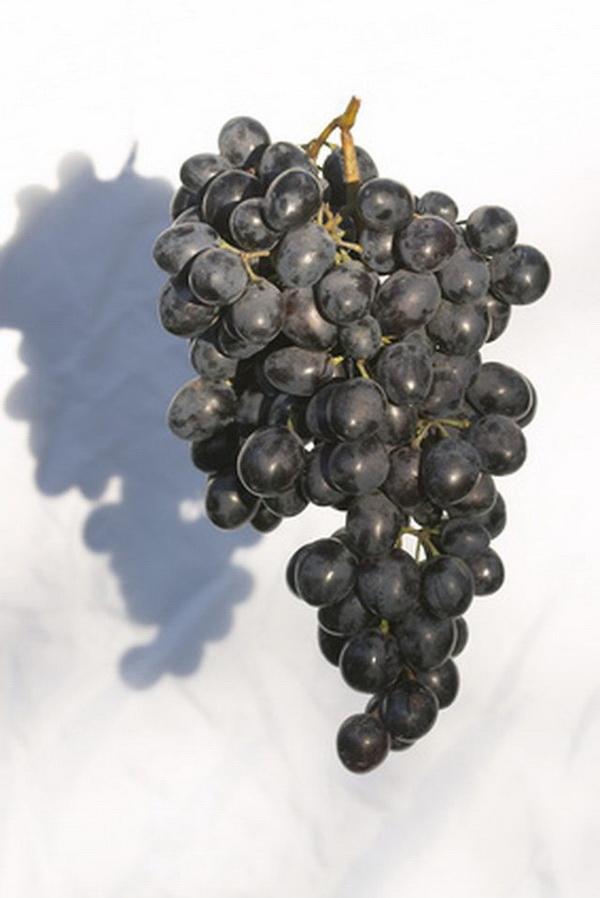
Step 1
Remove leaves on the ground around the grape vine. This will prevent insects and birds from invading the grape vines and keep the vines healthy.
Step 2
Prune away any tangled vines. The tangled vines will prevent the grape vine from producing grapes. Place the tangled vines in a compost bin or trash bag.
Step 3
Remove shoots growing between the trellis wires. This will encourage the vines to continue to grow on the wires. Cut these shoots at the base near the main stem.
Step 4
Cut away secondary shoots, also known as suckers, from the main cane's base. The suckers take energy away from the grape vine.

Step 5
Prune the canes to leave four on each side of the vine. Keep two young canes on each side that appear shiny and smooth to keep the grapevine producing fruit. Remove older canes when they begin to crack and peel.
Step 6
Prune the spurs on the main canes. Leave two to three of the bud spurs. Prune them by spacing them apart 4 to 6 inches.

Step 1
Remove leaves on the ground around the grape vine. This will prevent insects and birds from invading the grape vines and keep the vines healthy.
Step 2
Prune away any tangled vines. The tangled vines will prevent the grape vine from producing grapes. Place the tangled vines in a compost bin or trash bag.
Step 3
Remove shoots growing between the trellis wires. This will encourage the vines to continue to grow on the wires. Cut these shoots at the base near the main stem.
Step 4
Cut away secondary shoots, also known as suckers, from the main cane's base. The suckers take energy away from the grape vine.

Step 5
Prune the canes to leave four on each side of the vine. Keep two young canes on each side that appear shiny and smooth to keep the grapevine producing fruit. Remove older canes when they begin to crack and peel.
Step 6
Prune the spurs on the main canes. Leave two to three of the bud spurs. Prune them by spacing them apart 4 to 6 inches.
0
0
文章
Miss Chen
2017年11月10日

Strawberries, unlike many other fruits, grow on plants close along the ground, and put out their own runners for propagation. In Arkansas, strawberry plantings are split into two seasons.

Fall Planting
Many commercial growers plant their strawberries in the fall, to allow the plants to take root and establish over the winter for early spring blooming. When planting in fall, it's important to cover the strawberries with organic or plastic mulch to protect them through the winter.
Spring Planting
Most home gardeners choose to plant strawberries in the spring instead, for a more natural growing season. Spring plantings in Arkansas take place mid-April, when the ground has thawed to 55 to 60 degrees Fahrenheit, and is welcoming to young strawberry plants.

Location and Planting
Strawberries require plots that receive full sunshine all day, every day, to take advantage of the lush Arkansas warmth. The plants cannot tolerate crowding or wet feet, so in swampy areas of Arkansas, it's important to raise the beds or mix natural soil with plenty of quick-draining soil and compost.

Fall Planting
Many commercial growers plant their strawberries in the fall, to allow the plants to take root and establish over the winter for early spring blooming. When planting in fall, it's important to cover the strawberries with organic or plastic mulch to protect them through the winter.
Spring Planting
Most home gardeners choose to plant strawberries in the spring instead, for a more natural growing season. Spring plantings in Arkansas take place mid-April, when the ground has thawed to 55 to 60 degrees Fahrenheit, and is welcoming to young strawberry plants.

Location and Planting
Strawberries require plots that receive full sunshine all day, every day, to take advantage of the lush Arkansas warmth. The plants cannot tolerate crowding or wet feet, so in swampy areas of Arkansas, it's important to raise the beds or mix natural soil with plenty of quick-draining soil and compost.
0
0
文章
Miss Chen
2017年11月10日

Pests are attracted to garden strawberries (Fragaria x ananassa) as much as people are, but companion plants help keep pests at bay. Strawberries grow as perennials in U.S. Department of Agriculture plant hardiness zones 5 through 8 and as annuals in warmer zones. Companion plants for strawberries deter and distract pests, and host beneficial insects, but they don't compete with strawberries for light or nutrients. Space strawberries and their companions according to their final growth dimensions.

Herb Choices
Strawberries thrive in gardens with annual and perennial herb companions. Borage (Borago officinalis) helps strawberries resist insects and diseases, and common thyme (Thymus vulgaris) deters worms, according to a Michigan State University Extension in Kalamazoo County article. Borage is an annual herb that grows 12 to 36 inches tall and 9 to 18 inches wide; it bears bright-blue, star-shaped flowers in summer. Common thyme, which is hardy in USDA zones 5 through 9, grows 6 to 12 inches tall and wide, and bears tiny, lilac flowers from late spring through early summer. Another herb companion for strawberries is oregano (Origanum vulgare). Hardy in USDA zones 4 through 9, oregano varieties range from low, spreading mats to upright, bushes. They bear pink, purple or white flowers.
Vegetable Selections
In the vegetable patch, strawberries' companion plants include onion (Allium cepa), lettuce (Lactuca sativa) and spinach (Spinacia oleracea). Growing 12 to 18 inches tall and 6 to 12 inches wide, onion is grown for its flavorful, aromatic bulbs and leaves; it is harvested as an annual crop. Lettuce and spinach grow 6 to 12 inches tall and wide; they are annual plants. Lettuce varieties include romaine, iceberg, loose leaf and butterhead. A cool-weather vegetable, spinach is an upright plant with leaves rich in iron, phosphorus and vitamins A, B and C. Grow strawberries and vegetable companion plants in alternate rows for their maximum benefit.

Annual Flowering Varieties
Annual flowering plants attract beneficial insects to strawberries they are near. Nasturtium (Tropaeolum spp.) grows 1 to 10 feet tall and 1 to 3 feet wide, depending on the species and cultivar, and bears cream, yellow, orange or red flowers with a spicy fragrance in spring through fall. Marigold (Calendula officinalis), growing 1 to 2 feet tall and wide, bears chrysanthemum-resembling, deep-orange to yellow, early summer flowers that bloom through fall in cool climates. Both of these annuals grow readily from seeds sown directly in the ground just before the average final frost date, and they reseed in favorable conditions.
Perennial Flowering Options
Strawberries are productive ground-cover plants in garden borders with perennial companions. Pincushion flower "Butterfly Blue" (Scabiosa "Butterfly Blue") and speedwell "Foxy Lady" (Veronica "Foxy Lady") thrive in the same full-sun sites and moist, well-drained soil in which strawberries do well. Hardy in USDA zones 5 through 9, "Butterfly Blue" grows 12 to 18 inches tall and wide. It bears 2-inch, lavender-blue, pincushionlike flowers spring through fall and into winter in mild climates. "Foxy Lady," which is hardy in USDA zones 4 through 8, grows 12 to 18 inches tall and 9 to 12 inches wide. It produces 12- to 15-inch spikes of fuschia-pink and white flowers in summer.

Herb Choices
Strawberries thrive in gardens with annual and perennial herb companions. Borage (Borago officinalis) helps strawberries resist insects and diseases, and common thyme (Thymus vulgaris) deters worms, according to a Michigan State University Extension in Kalamazoo County article. Borage is an annual herb that grows 12 to 36 inches tall and 9 to 18 inches wide; it bears bright-blue, star-shaped flowers in summer. Common thyme, which is hardy in USDA zones 5 through 9, grows 6 to 12 inches tall and wide, and bears tiny, lilac flowers from late spring through early summer. Another herb companion for strawberries is oregano (Origanum vulgare). Hardy in USDA zones 4 through 9, oregano varieties range from low, spreading mats to upright, bushes. They bear pink, purple or white flowers.
Vegetable Selections
In the vegetable patch, strawberries' companion plants include onion (Allium cepa), lettuce (Lactuca sativa) and spinach (Spinacia oleracea). Growing 12 to 18 inches tall and 6 to 12 inches wide, onion is grown for its flavorful, aromatic bulbs and leaves; it is harvested as an annual crop. Lettuce and spinach grow 6 to 12 inches tall and wide; they are annual plants. Lettuce varieties include romaine, iceberg, loose leaf and butterhead. A cool-weather vegetable, spinach is an upright plant with leaves rich in iron, phosphorus and vitamins A, B and C. Grow strawberries and vegetable companion plants in alternate rows for their maximum benefit.

Annual Flowering Varieties
Annual flowering plants attract beneficial insects to strawberries they are near. Nasturtium (Tropaeolum spp.) grows 1 to 10 feet tall and 1 to 3 feet wide, depending on the species and cultivar, and bears cream, yellow, orange or red flowers with a spicy fragrance in spring through fall. Marigold (Calendula officinalis), growing 1 to 2 feet tall and wide, bears chrysanthemum-resembling, deep-orange to yellow, early summer flowers that bloom through fall in cool climates. Both of these annuals grow readily from seeds sown directly in the ground just before the average final frost date, and they reseed in favorable conditions.
Perennial Flowering Options
Strawberries are productive ground-cover plants in garden borders with perennial companions. Pincushion flower "Butterfly Blue" (Scabiosa "Butterfly Blue") and speedwell "Foxy Lady" (Veronica "Foxy Lady") thrive in the same full-sun sites and moist, well-drained soil in which strawberries do well. Hardy in USDA zones 5 through 9, "Butterfly Blue" grows 12 to 18 inches tall and wide. It bears 2-inch, lavender-blue, pincushionlike flowers spring through fall and into winter in mild climates. "Foxy Lady," which is hardy in USDA zones 4 through 8, grows 12 to 18 inches tall and 9 to 12 inches wide. It produces 12- to 15-inch spikes of fuschia-pink and white flowers in summer.
0
0




